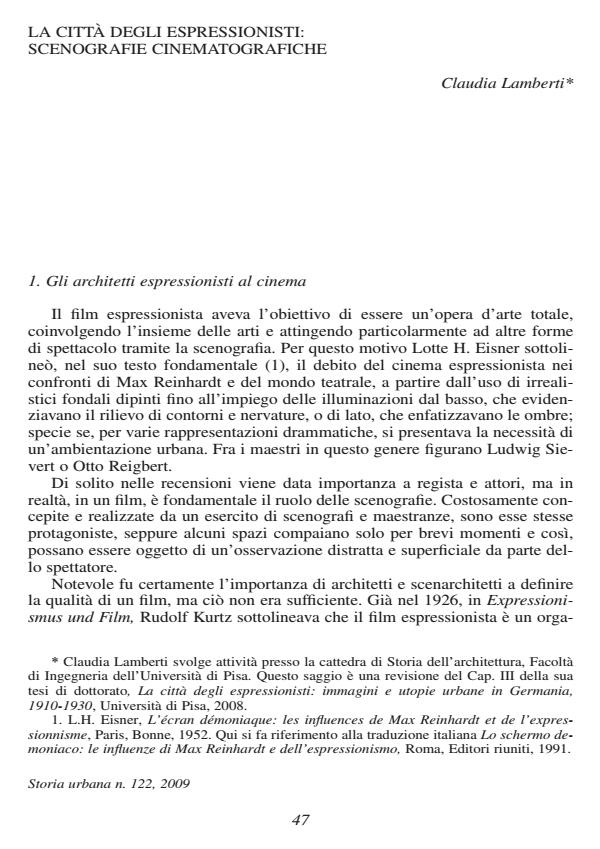La città degli espressionisti: scenografie cinematografiche
Titolo Rivista STORIA URBANA
Autori/Curatori Claudia Lamberti
Anno di pubblicazione 2009 Fascicolo 2009/122 Lingua Italiano
Numero pagine 21 P. 47-67 Dimensione file 5002 KB
DOI 10.3280/SU2009-122003
Il DOI è il codice a barre della proprietà intellettuale: per saperne di più
clicca qui
Qui sotto puoi vedere in anteprima la prima pagina di questo articolo.
Se questo articolo ti interessa, lo puoi acquistare (e scaricare in formato pdf) seguendo le facili indicazioni per acquistare il download credit. Acquista Download Credits per scaricare questo Articolo in formato PDF

FrancoAngeli è membro della Publishers International Linking Association, Inc (PILA)associazione indipendente e non profit per facilitare (attraverso i servizi tecnologici implementati da CrossRef.org) l’accesso degli studiosi ai contenuti digitali nelle pubblicazioni professionali e scientifiche
The Expressionist city: film sets - The essay compares the images of the city defined by the Expressionist movement and the city images in the films of the time. Expressionist architects discovered that film-set design gave them a chance to experiment with their artistic skills. At the same time, film studios could not shoot outdoors easily and so were forced to rely on constructed sets. All this worked out as an incentive for architectural invention. Sets became an apt proving ground for the new expressiveness of the architects as well as a way to experiment with the use of space without limits and constraints. This essay examines the cases of 6 films whose elements are specifically and directly attributable to the Expressionist culture. Here the case of the city encompasses both set design and the urban atmosphere in films linked with the avant-garde movements. The essay also provides a filmography of the most important films with urban settings shot by German artists in the 1920s and 1930s.;
Claudia Lamberti, La città degli espressionisti: scenografie cinematografiche in "STORIA URBANA " 122/2009, pp 47-67, DOI: 10.3280/SU2009-122003